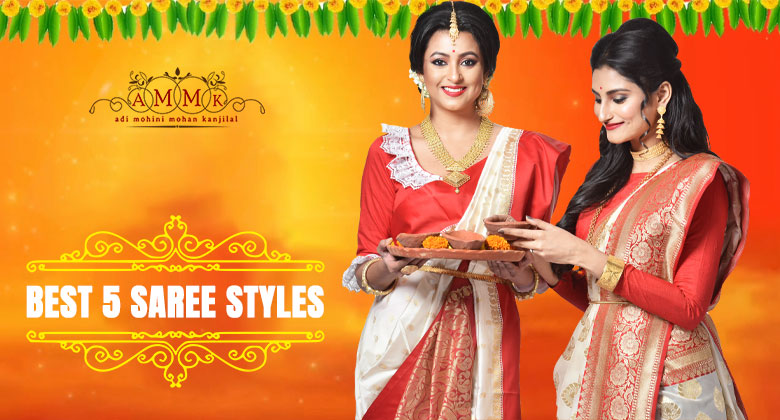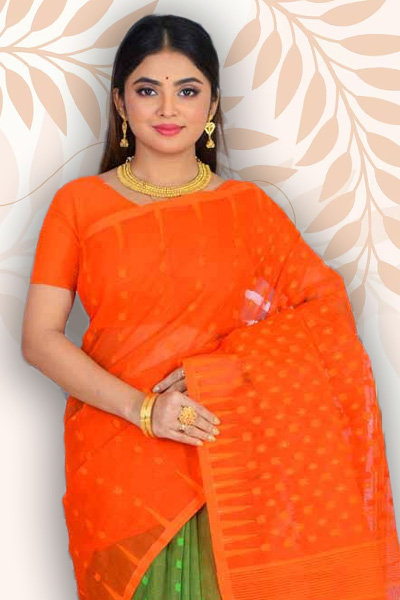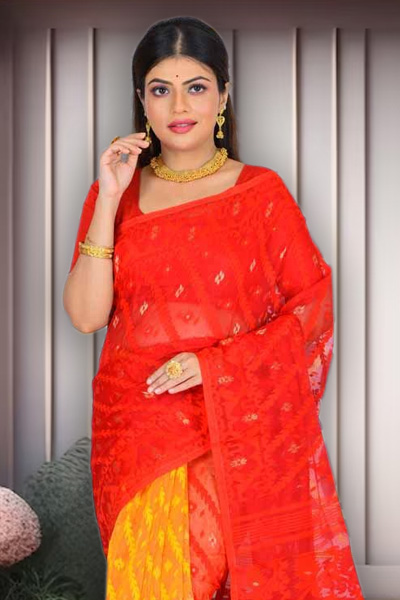
Top 5 Saree Draping Styles From Different Parts Of India
The saree is a versatile attire and can be worn by anybody – whether you are a college girl looking for a saree for your graduation ceremony or a daughter-in-law intending to gift her mother-in-law a saree on her first Durga Puja after marriage, there is something that will match with every personality. One does not have to worry about the sizing as one size fits all – the blouse can be fashioned later as per the tastes and requirements of the wearer.
There are many types of saree draping, but certain points are to be followed before you drape a saree for yourself for a respective occasion.
Always tie up your petticoat firmly at the waist, so that the saree is tucked in properly. Always put on Heals, or any footwear you would like to wear along with the saree, before you start draping up, as this brings the perfect adjustment draped around the body. Use safety pins or clips to pin up pleats and sections where the drape is required to be kept.
Now, there are five of the most loved and trendy ways of wearing the saree is given for you from which you can pick up your style of drape.

Bengali Style: A traditional saree with a red border, a blouse with puff sleeves, a petticoat, round bindi red to be precise, and a trinket is what you will need for this look. Start by tucking the saree on the right side of the waist and take it a full circle around to the left then back and repeat this for twice. Once done, make the pallu pleats to form a deep U at the front and tie a trinket at the one end of it. Lastly, bring the corner of the pallu under the right hand to the front and place it on the right shoulder.
Maharashtrian style: For this style, you will need a pair of cycling shorts, a matching blouse, a nose pin, a Paithani saree, a few safety pins and a pair of comfortable footwear. Holding one end of the saree make a full circle around the waist and tie a knot around the waist center by taking a few inches off on both of the edges. Make 6 or7 pleats from the untied portion of the saree and tuck them around the waist center then proceed to make the 5 pallu pleat and bring them in from the back over the left shoulder and put up a safety pin neatly and you have your style done nicely.
Nivi style: This style has been among the longest-lasting styles of draping the saree. This style originated from the southern state of Andhra Pradesh. This traditional draping technique has a versatility that suits any occasion. For this style, you will need a stylish saree, a fitted blouse, a matching petticoat, a few safety pins and a pair of comfortable heels.

For this, tuck one end of the sari in the inskirt and take the other end one full round and make sure that it fall an inch short off the ground. Continue to make 6-7 pallu pleats and hold them from the back and bring them to the front. Now take the pleated pallu, take it over the left shoulder and pin it up nicely. Towards the right, pick the untied portion of the saree from the upper end and tuck it in the petticoat then make the pleats once more from the assembled part of the saree and tuck those in as well and let them face left and pin it up. Your Navi style look is done.
Seedha pallu: A draping style practiced in the states of Uttar Pradesh, Gujarat and Odisha, seedha pallu sarees are worn here by folk women on an everyday basis. Quite similar to a lehenga choli, in this style, the veil is used in place of a chunni. This particular style allows for freehand movements and works really well for heavy-work sarees as the shoulders do not have to carry the weight of heavily worked decorations on the veil. Also, it’s the best way togive exposure to all the intricate designs found around the saree’s veil and border.
Pinkosu: Worn by the women of Tamil Nadu, pinkosu is a saree-draping style most suitable for hot weather. The word ‘pinkosu’ literary means ‘pleats at the back’, hence in this style, the saree is wrapped around the waist one and a half times, providing more coverage, where unlike a normal saree, the pleats fall towards the outside of the wrap from the inside. So basically, the underside of the saree is shown, so the wearer must choose their saree accordingly. Handloom cotton sarees are therefore suitable for this style, as they are reversible and can be worn from both sides.
Today it is seen that online saree shopping in India has become more popular because online shopping is so cheaper and convenient. You can choose different styles of saree draping and buy sarees in one place because in India different saree wearing styles are available. The website of Adi Mohini Mohan Kanjilal has become a shopping space where women find all sorts of Sarees suitable for any style of draping and for all occasions. Whether it is a designer Saree, or a Cotton saree you are looking for, Adi Mohini Mohan Kanjilal is ready to welcome you to their website with a huge stock of fashionable sarees of your choice.
